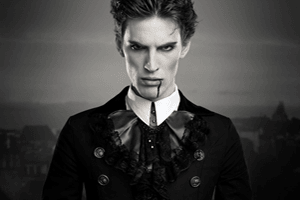A New Look at an Old Subject
"Few creatures of the night have captured our imagination like vampires.
What explains our enduring fascination with vampires?
What is it about the vampire myth that explains our interest?
Is it the overtones of sexual lust, power, and control?
Or is it a fascination with the immortality of the undead?
And what dark and hidden parts of our psyche are aroused and captivated By the legends of the Undead."
What explains our enduring fascination with vampires?
What is it about the vampire myth that explains our interest?
Is it the overtones of sexual lust, power, and control?
Or is it a fascination with the immortality of the undead?
And what dark and hidden parts of our psyche are aroused and captivated By the legends of the Undead."
Raymond T. McNally, sound bites from the song Vampires by Godsmack
Your heart begins to race as the last rays of the sun set beyond the horizon. You have been anxiously waiting for this moment all day. But is it with trepidation or exhilaration that you find the blood rushing through your veins? The pulsing rhythm pounds in your ears and stirs your senses. Everything is alive now, as the darkness purples the sky and the stars come out to visit you.
Soon another sensation will arise, and burn you with a calling that you have come to depend on. Is it hunger or thirst, or something deeper, more carnal? The craving for that which mortal men take for granted, and you take for food? Blood. You need blood. You NEED. It isn’t lust, desire or passionate wanting. You need.
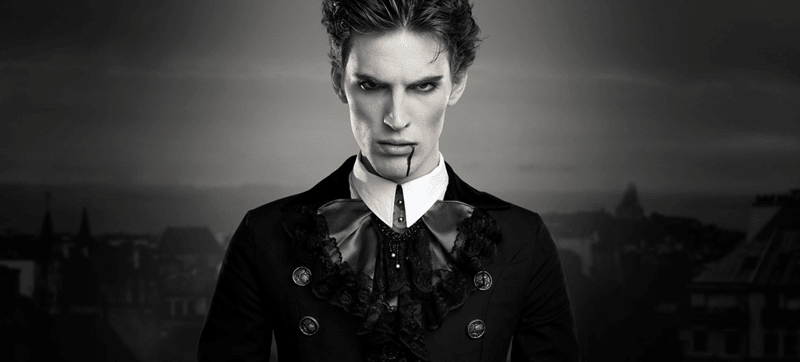
What must it be like to be driven by such a compulsion? The need to feed on that which gives us life. This must be what it is like to be a vampire. Can a mere mortal ever understand such a sensation? Without exaggeration, for millennia mankind has been fascinated with legends of creatures that might have this very need.
We have feared them, making them monsters - the reanimated deceased, or Un-dead - who must kill in order that they should survive. We have glorified them, making them the ultimate connoisseurs of passionate lust. We have deified them, worshiped them, and granted them immortality.
In other words, they embody everything that humans wish they could be and can never be without severe circumstances… and consequences.
The Origin of the Species
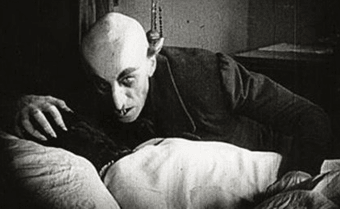 The word vampyre only entered
the English language in
1734 when German accounts of
the “vampyre hysteria” in Europe
were translated to English.
This was at a time in European
history when the plague was
making a resurgence through
Austria, Germany, Hungary, Poland,
and Russia. Besides the
plague, typhus and influenza
resulted in many thousands of
deaths in the 16th century.
The word vampyre only entered
the English language in
1734 when German accounts of
the “vampyre hysteria” in Europe
were translated to English.
This was at a time in European
history when the plague was
making a resurgence through
Austria, Germany, Hungary, Poland,
and Russia. Besides the
plague, typhus and influenza
resulted in many thousands of
deaths in the 16th century.
Fear of the dead was natural, as it seemed that the sick, dying, and deceased spread the plague. The belief that the dead were coming back to cause more death was rampant and it was this environment that lead to many Eastern European vampire myths. In fact, nosferatu is a Slavic word for “plague carrier” (from the Greek nosophoros), but has come to be synonymous with “un-dead” or vampire.
The earliest known form of the word, upir, was first recorded in 1034 in Russia describing a notorious prince as “upir lichy”, or “wicked vampire”. However, the history of the vampire is as long as that of mankind, and has had many names in many lands.
Mythology and Legends
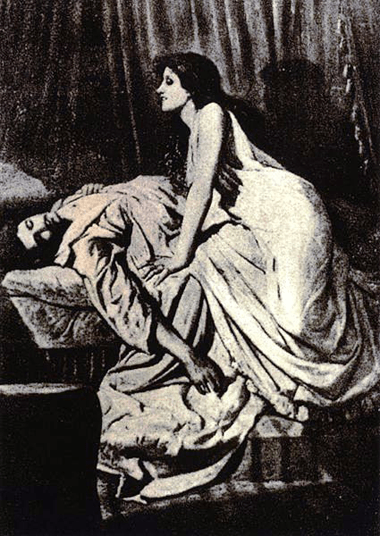
O vampiro, 1897, by Philip Burne-Jones
Serpentine vampires called empusas plagued the ancient Greeks. The most famous was Lamia, a queen who had made the mistake of falling in love with Zeus. The mistake being that Hera found out about the tryst as cursed Lamia to become half serpent. For her revenge, Lamia roamed the countryside attacking children and drinking their blood. Empusas were also skilled seducers of men, being beautiful women above the waist, never revealing their serpentine nature until it was too late.
In Hindu mythology there were shape-shifting demons known as rakshasas, which fed on human flesh and could be found living in cemeteries. They were often blamed for illness, or simple mischief, often times being just as likely to help someone become rich. However the latter was usually the means to gain someone’s trust before attacking them.
The medieval cousin of the vampire is the incubus (from the Latin incubare, meaning “to lie upon”), which was a demonic spirit that usually took a male form and would force itself sexually upon women while they slept. Incubi have been known to take female form in order to seduce men as well, but usually such a spirit is known as a succubus (from the Latin succubare, “to lie under”). Sensual and sexual dreams (or nightmares for the penitent) were explained away by the legends of these seductive demons.
Perhaps the legendary creatures we would recognize the most as being the basis of our modern mythology comes from Romania, and were known as strigoi morti, or “dead witches”. The implication being that these creatures were the dead who were reanimated via a pact with the devil. They would leave their graves at night so they could feed on the blood of the living. Though they could take on the appearance of an attractive person, they reeked of death when nearby. Like repelled like to the Romanians, so they believed the strigoi were repelled by garlic. It was believed that a branch of wild rose could prevent them from leaving their graves. Ultimately however, once they returned, they could only be stopped by staking and decapitation. Their living counterparts were the strigoi vii, or “living witch/vampire”, which could leave their bodies at night and attack people psychically.
This is but a small sample of the myriad of demonic, cursed, dead, seductive, and deadly creatures that give us a glimpse into our obsession with vampires. To be considered vampiric therefore is only to feed on the living, taking what you need to survive. It need not always be blood, but this simply was the most physical and visible form of life energy to take. It is because of these different backgrounds that we have to say that no two vampires are alike. They are as varied as the cultures they were created from.
Diagnosis: Vampirism
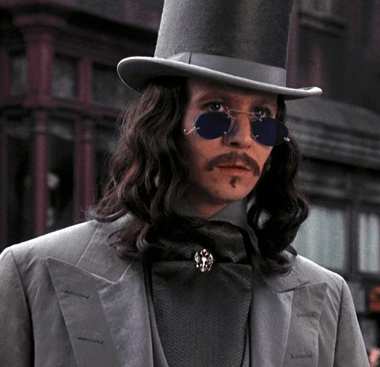 But where did the myths
come from? Behind every legend
there is either a grain of
fact or a question that needed
an answer. Vampirism is no different;
it is just harder to trace
one source, even amongst one
culture. But in most cases, the
main cause is a communicable,
fatal disease. There are many
to choose from, but the most
prevalent was the Bubonic
plague, or the Black Death,
which shaped Europe over the
course of hundreds of years,
spreading from one culture to
another. In many cases, these
pandemics were also attributed
to witchcraft, thus linking the
two together in the public’s
mind.
But where did the myths
come from? Behind every legend
there is either a grain of
fact or a question that needed
an answer. Vampirism is no different;
it is just harder to trace
one source, even amongst one
culture. But in most cases, the
main cause is a communicable,
fatal disease. There are many
to choose from, but the most
prevalent was the Bubonic
plague, or the Black Death,
which shaped Europe over the
course of hundreds of years,
spreading from one culture to
another. In many cases, these
pandemics were also attributed
to witchcraft, thus linking the
two together in the public’s
mind.
People never expected that the sick and deceased could still pose a threat. It wouldn’t be until the 19th century that doctors would discover the bacteria that were passed from rats to the fleas that fed on them and in turn infected humans. But such is the nature of hysteria; it’s hard to think rationally when your skin is covered in infectious black lumps that are slowly causing you to bleed internally, leading you to the same painful death that you saw your townsmen, your own family, suffer from. Of course you’re going to blame the old woman down the street whose remedies failed to cure you; she must be in league with the devil. Of course you’ll also blame your husband who raped you in your sleep last week, even though he’s been dead a month now; he must be a vampire.
Others have linked vampirism to rabies outbreaks, which also took place in 19th century Eastern Europe. At first a bitten person might not realize they are sick, but will eventually become ill, suffering from high fevers, a loss of appetite, and extreme lethargy. In the late stages of a rabies infection, patients try to avoid the sunlight and prefer walking at night. Flashes of light, like those that might be reflected by mirrors, would cause violent animal- like episodes, which could drive a patient to attack and bite others, thus potentially spreading the infection. A rabid person is literally overcome with animalistic tendencies, becoming wild and uncontrollable. Some with advanced rabies have even vomited blood. All of these symptoms have become forever linked to vampires thanks to their description in the literature of the time, like Bram Stoker’s Dracula.
One must also understand that nature is full of creatures that feed either partly or solely on blood. Mosquitoes, ticks, and fleas, as well as leeches, were common and well known for their parasitic nature. In South America, zoologists would also discover vampire bats, and give them that name to describe their thirst for blood. Surely it seemed logical then for them to take this knowledge, combine it with their fears and religious dogma, and explain their problems with vampires.
Art Imitates Life Imitates Art
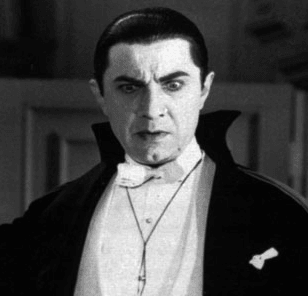 When most people think of
vampires, they probably imagine
“Count Dracula”, and might
consider him to be the
granddaddy of them all. But in
fact, this is not the case even
amongst British literature. The
Europeans suffered greatly from
the Dark Ages into even modern
times with the tragedy of
epidemic diseases. As a result
they would pen poetry, stories,
and novels detailing their trials
and tribulations, describing the
mythical creatures that caused
them. At first they were warnings
with graphic depictions of
these deadly creatures. But
eventually, the culture would
come to romanticize them.
When most people think of
vampires, they probably imagine
“Count Dracula”, and might
consider him to be the
granddaddy of them all. But in
fact, this is not the case even
amongst British literature. The
Europeans suffered greatly from
the Dark Ages into even modern
times with the tragedy of
epidemic diseases. As a result
they would pen poetry, stories,
and novels detailing their trials
and tribulations, describing the
mythical creatures that caused
them. At first they were warnings
with graphic depictions of
these deadly creatures. But
eventually, the culture would
come to romanticize them.
As odd as this would seem — why idolize something so feared and despised for centuries — it is actually almost understandable… and predictable. Believe it or not, the church is primarily to blame. You see, everything sinful is banished together, creating new monsters capable of horrible evils. Take the legends of succubi and incubi, which deviously force sexual lust upon a victim, and mix this with the living dead, who are the minions of the devil, and voila. You now have creatures that use temptation, which caused the fall of man and Lucifer himself, to kill innocent folk. Only the valiant priests can save us all, and save our soul, from these foul beasts of the night.
However, once a seductive legion of evildoers is unleashed, there’s no turning back. Legends die harder than even vampires do. Now, the vampire had the power to entice people into releasing them from sexual repression. They could tempt you into joining them off the mortal coil and away from the rules of church and state. They were the ultimate liberating force, and people loved to hear stories about them.
Hollywood Revamped
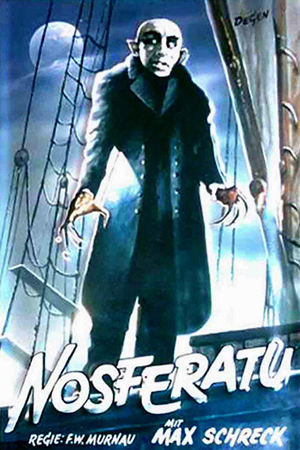 But no medium has helped
spread the romance with vampires
better than cinema. Film
has depicted vampires in outlandish
and seductive new
ways. It has been the cause
of even new powers and
scourges for vampires. Cinema
introduced the concept that
sunlight and a stake through the
heart would crumble a vampire
to dust. Even Bram Stoker’s
literary creature could walk in
daylight and was not killed by a
stake; it was actually a bowie
knife, and he simply expired, he
did not crumble or explode. But
this didn’t stop Hollywood from
making money off the ideas.
But no medium has helped
spread the romance with vampires
better than cinema. Film
has depicted vampires in outlandish
and seductive new
ways. It has been the cause
of even new powers and
scourges for vampires. Cinema
introduced the concept that
sunlight and a stake through the
heart would crumble a vampire
to dust. Even Bram Stoker’s
literary creature could walk in
daylight and was not killed by a
stake; it was actually a bowie
knife, and he simply expired, he
did not crumble or explode. But
this didn’t stop Hollywood from
making money off the ideas.
What films truly provided for the public was the visual look of the vampire. The 1922 German silent film classic, Nosferatu: Eine Symphonie des Grauens (“A Symphony of Terror” in English) is praised for providing the most accurate screen image of the vampire from folktales. Truly a living corpse, deformed, even demonic in appearance with long, sharp claws, and gnarled fangs, not extended canines. He moved with an inhuman stature, and yet he held sway over those he needed.
Cinema also helped refine the sensuality and temptation of the vampire, because unlike Nosferatu, which strived to be accurate, the rest of cinema tried to sell movie tickets. The way to do that is to feature handsome actors and beautiful actresses to play the insidious creatures. Yet again, this only served to reinforce the “sex is sinful, but you know you want it” allure of vampires.
The hunger, or bloodlust of the vampire, however received very little treatment. This almost bolstered our concept that we may never fully understand what it is like to be cursed with vampirism. Some modern movies however have made strides with this. Francis Ford Coppola’s interpretation of Bram Stoker’s Dracula did well with this, but he actually described the hunger quite well in his journal, part of which was published in the book Bram Stoker’s Dracula: The Film and the Legend.
He wrote, “Everyone knows the phenomenon of trying to hold your breath underwater - how at first it’s alright and you can handle it, and then as it gets closer and closer to the time when you must breathe, how urgent the need becomes, the lust and the hunger to breathe. And then the panic sets in when you begin to think that you won’t be able to breathe - and finally, when you take in air and the anxiety subsides... that’s what it’s like to be a vampire and need blood.”
But Vampires are Fictional. Right?
Here’s where we cross the line and ask the question, “Which came first, the fact or the fiction?” Certainly vampires are legendary. But are they real? Do people really live today with a medical or clinical vampirism? Or is it mental, or even just plain theatrics?
Do not dismiss when I tell you that vampires are indeed real and many people today fit the definition of living vampires. To my knowledge none of them are immortal, nor do they claim to be. Although, many have claimed to have been reincarnated. This is not an implication that vampires have to have lived before, nor that all people who have discovered their past lives are vampires. But it is a common trait I have discovered.
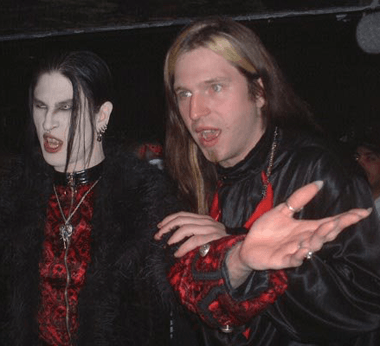 The primary trait that defines
a vampire is their craving
for life energy. Notice again I
did not say blood. Blood is only
one carrier medium for life energy.
As we’ve seen in other
ancient forms of vampirism,
psychic energy is vital to a human,
as is sexual energy, and
both are prone to attack. Vampires
today tend to fall into
these same three categories:
pranic (or psychic) vampires,
sexual vampires, and sanguine
(or blood-drinking) vampires.
The primary trait that defines
a vampire is their craving
for life energy. Notice again I
did not say blood. Blood is only
one carrier medium for life energy.
As we’ve seen in other
ancient forms of vampirism,
psychic energy is vital to a human,
as is sexual energy, and
both are prone to attack. Vampires
today tend to fall into
these same three categories:
pranic (or psychic) vampires,
sexual vampires, and sanguine
(or blood-drinking) vampires.
Pranic vampires are those people who literally drain your energy levels. Prana, also known as chi, is the energy that is believed to flow within all of us. When our chi is in balance, we are in harmony. But when these energy levels are unbalanced, they can cause stress, illness, depression, and more. A pranic vampire believes that they actually can absorb another person’s chi in order to balance theirs out. After spending time with a pranic vampire, you may feel lethargic, depressed, or even anxious to get away. Some pranic vampires are also empathic, in that they feed off of strong emotions and feelings. If you are near them, you may find yourself going through a host of emotions, unable to control yourself, and leave quite shaken afterwards.
Sexual vampires are more than just nymphomaniacs, or sex addicts, although this is a trait they can have. A sexual vampire can be either like the pranic vampires described above, or like the blood-drinkers we know so well, or be a hybrid of both. Like the incubi and succubi of old, they can satiate themselves on the sexual energy that is fueled by passion, and/or they can slake their thirst on the fluids produced during intercourse.
Sanguinarians, or sanguine vampires, are the type we are familiar with. They are the ones that drink blood in order to satisfy their appetites. Blood is symbolic of life, and has been in many cultures throughout the ages. Even in the book of Deuteronomy, from the Torah (a.k.a. the Old Testament), we are commanded to understand “For the blood is the life, and thou shalt not consume the life with the flesh (of animals).” This is more than just an important kosher law; it commands that it is wrong to take the life of another inside you by drinking the blood.
There are of course other types of vampires, but they are sometimes related to one of the above. For example, I have heard of elemental vampires, who actually feel the energy of the elements around them and can feed on them. People whose mood, even physical well-being changes “with the weather”, may be latent elemental vampires. These people may stand out in a storm and feel rejuvenated by the raw power the wind or rain generates, for example.
Constant Cravings
My personal theory about vampirism is very simplistic; so much so I think it is taken for granted. Perhaps this is not true in every case, but we should already be used to generalities, so here’s mine. Put simply, vampires have a craving that they cannot satisfy with a normal diet. No shit, Sherlock. Seriously, some cravings are obvious, but some aren’t.
Pregnant women for example are the classic case. Their bodies are already going through drastic changes, producing hormones, trying to not only maintain the mother’s health, but also provide for the child inside them. They will start craving banana splits… with pickles! Or even foods they’ve never liked before, suddenly it’s all they’ll eat. They don’t know really what it is the “baby wants”; it isn’t the baby craving it, it’s their body craving nutrients. The body will tell you what will satisfy that craving.
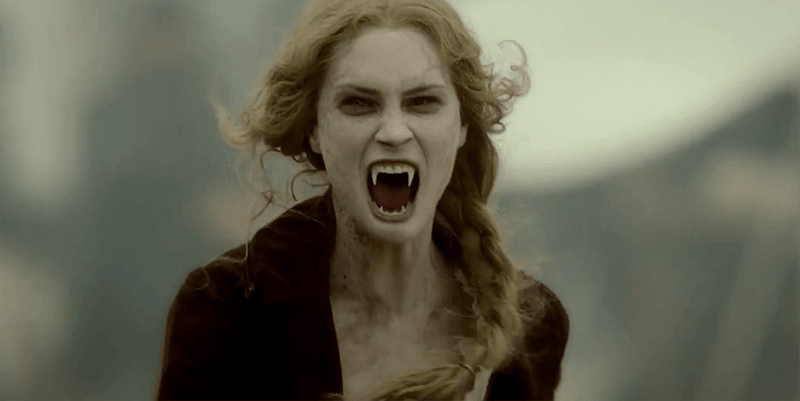
There’s another mysterious craving that can affect pregnant women, but also anyone with an iron deficiency. The general term is “pica syndrome”, and it manifests in people eating very strange things, some with seemingly no nutritional value, some that can actually be harmful. This includes people eating chalk, dirt, clay, sand, starch, even laundry starch! Some of these might make sense, as dirt has a certain level of iron in it. If you find that your child eats mud-pies, maybe an iron supplement would help.
Another pica syndrome, which truly baffles the medical community, is one that I suffered from after a surgery that I had about five years ago. I had an almost constant craving for ice! Being a native of Phoenix, Arizona, and during the summer, this didn’t immediately strike me as odd. However after a while it started to bug me. I explained this to my doctor during a follow-up from the surgery, and he just smiled at me and said, “Congratulations Dan, you are now a member of the Pica club.”
He went on to say that pregnant women sometimes crunch ice or eat lots of ice cream to satisfy their craving for ice. The issue amazingly is usually an iron deficiency — same as dirt eating. But as ice has no iron in it, they only figure the craving is actually for cold things. Why this is, they don’t know. At least they have a name for it: pagophagia.
Which, in a frightening way brings me back to my discussion of cravings. Sometimes, you just don’t know why you crave something; you just do. Haemophagia is the medical term for the craving that living vampires have; a craving to consume blood. Is it because blood has a certain iron content, or sugar content, or even oxygen content? We may never know. But we know what happens when a craving isn’t met.
Fetish, Food, or Addiction?
Is there a difference between a vampire and someone with a fetish? Could any of this be explained as an addiction? There is a difference in that a vampire craves blood or energy. This craving is a physical need that is satisfied once enough has been consumed.
This could be compared to an addiction, except that an addiction implies an acquired taste. Someone who has never smoked cigarettes, drunk alcohol, or done any drugs does not crave these things until they become dependant on them. Peer pressure provides the usual reason to start partaking of those vices. That being said, do people really crave blood, or do they see it in a movie starring a sexy vampire and think they’d like to give it a try?
I cannot answer this question because I know personally I have no desire to drink blood, yet I still enjoy reading (and writing) a good vampire tale. From what I have heard, the cravings are not linked to any social stimuli. In fact, many vampires reject their cravings at first because of society’s mandates that drinking blood is “evil”. Some do experience their first taste however from their own wounds.
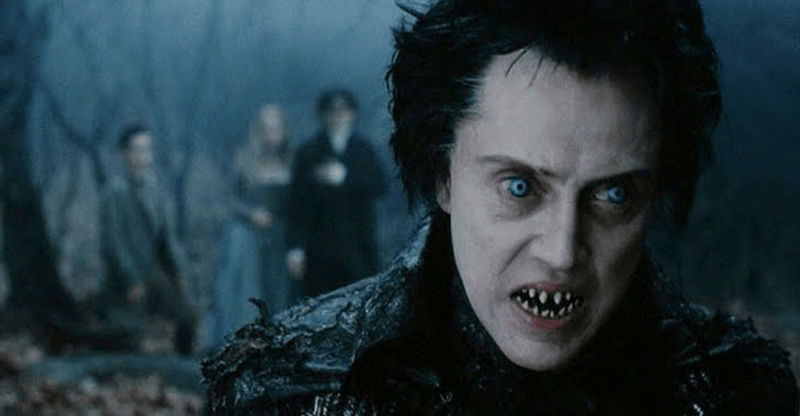
Autovampirism is the name for tasting/drinking one’s own blood. The first taste is almost always from an accidental wound. At the sight of their blood, they may feel a craving come over them, or a simple curiosity may compel them to lick their wound. If they find their craving is satisfied and they liked it, autovampirism can lead to “cutting”, or self-mutilation. But cutters are usually attracted to the pain and the sight of blood, and not the taste of blood.
This leads me to fetishes. A fetish is an object, like a totem, that represents something else, usually of religious significance. Sigmund Freud expanded the definition to mean anything that someone obsesses over having. A sexual fetish is usually manifest by requiring a certain object, or body part, to become the focus of arousal. Without that fetish, there is no arousal. Fetishes range from everything from toes, legs, breasts, leather, toys, etc., but can in some cases include blood.
A blood fetish is just the sexual arousal at the sight of blood, not the consumption of it. If you ask me, humanity has a latent blood fetish that is never really talked about. It might explain why we believe that blood is the medium of life, and consider it to be so holy. Moreover, why do we enjoy violent movies and sporting events, hoping to see blood spilt? Why do we slow down on the freeway when we pass a fatal car accident? OK, more generalizations, but maybe Freud was right that blood has a sensual connection? In any case, a vampire might have a blood fetish, but a blood-fetishist is not a vampire if they do not consume it. Not all vampires are sexually aroused from their consumption, either.
Can these practices become dangerous compulsions? Absolutely, if not controlled, human nature drives us to get what we need, and the vampires I have heard from would agree. Such people are known as psychopaths, or individuals who do not care who they hurt, or how, in order to get what they want. The compulsion does not create the psychopath, the short circuit in the brain that governs our morals is responsible for that.
The Embrace of The Vampire Clan
The perfect case for this is Rod Ferrell. In 1996, then only sixteen years old, Roderick Ferrell led a group of teenagers on a trip from Kentucky to New Orleans. He was clearly a blood fetishist, but he claimed he was a supernatural vampire. He had convinced his friends Dana Cooper, Charity Keesee, and Scott Anderson, that he was a vampire and would grant them immortality once they arrived in New Orleans. The foursome claimed to have shared blood often and called themselves the Vampire Clan.

2008 Mug shot of Roderrick Ferrell.
Getting inside unnoticed was the easy part. So was finding the vehicle. But they needed the keys. Assuming you were a sane criminal (this is not an oxymoron), you would try to acquire them without being detected, let alone a struggle. But Rod was not sane, nor was he alone. He convinced Scott that they needed to kill Heather’s parents in order to get away with stealing the car. They would consume their lives in order to be ready for the final leg of their trip.
So on Thanksgiving night, the two went inside, and found the father sleeping on the couch and the mother upstairs. According to them, Rod told Scott to handle the mother while he took care of the father. Using a tire iron that he took from their garage, Rod beat the father to death, and continued until he was hardly recognizable; nothing but a bloody mess. Scott went upstairs but did not disturb the mother. Instead he came back down to find what Rod had done. The mother also came downstairs, and when she did, she too was beaten by Rod.
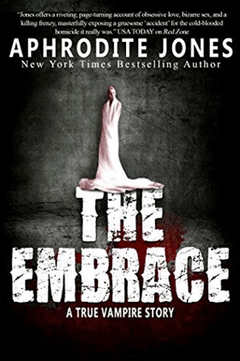 This story made headlines
not only because of the brutality
involved, but because of the
fact that Rod claimed that he
and his accomplices were vampires.
A journalist named
Aphrodite Jones wrote a bestselling
book based on the story,
entitled The Embrace: A True
Vampire Story, which was
later filmed as a mediocre movie
named “The Vampire Clan”. My
point here is that Rod Ferrell,
now 24, is on death row for the
murders he committed.
Whether he is a vampire or not, he is a psychopath pure and simple.
This story made headlines
not only because of the brutality
involved, but because of the
fact that Rod claimed that he
and his accomplices were vampires.
A journalist named
Aphrodite Jones wrote a bestselling
book based on the story,
entitled The Embrace: A True
Vampire Story, which was
later filmed as a mediocre movie
named “The Vampire Clan”. My
point here is that Rod Ferrell,
now 24, is on death row for the
murders he committed.
Whether he is a vampire or not, he is a psychopath pure and simple.
Psychologists have defined a term for a new condition, Vampire Personality Disorder (VPD) and even given it a nickname: Renfield’s Syndrome. People with this disorder essentially begin their blood fetish with autovampirism. They will eventually eat small animals in order to gain their lives. The disorder helps the patient rationalize progressing up the food chain to “bigger lives”, which could become fellow humans. The insane character Renfield from Bram Stoker’s Dracula exhibited this syndrome to the extreme. This craving itself is known as zoophagia, or the consumption of living animals. Is this person really a vampire with a craving that’s gotten out of control?
To answer that, you’d really have to understand the human psyche, and I’m no doctor by any means. But, I can imagine what must happen to someone who has a need that can’t be met. If and when they discover what it is they need, and in this case they are told it is forbidden by every authority, they’d probably snap. What happens then is what really determines their ultimate state and classification.
The admitted vampires in this world are obviously very careful in how they meet their needs. None of them would justify the intentional harming of another person, especially if it leads to murder. They believe that the key is to help younger vampires understand their cravings.
Vampirism in Our Culture Today
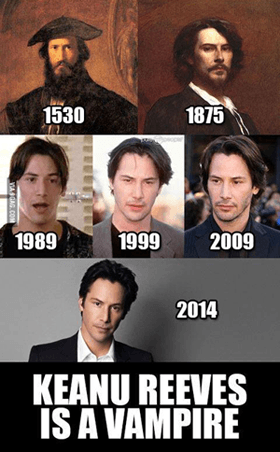 There is much discussion by
some learned people about the
state of our society today.
They would have us believe that
these are darker times, and
they may very well be right. It
seems to me, however, that
these times are no darker than
any other period in history. Everything
works in cycles, and
the course of mankind is no different.
We have good times
and bad. War, famine, pestilence,
and death are our ever-vigilant
curses. But the beauty
of mankind is seen in our attempts
to try to make things
better.
There is much discussion by
some learned people about the
state of our society today.
They would have us believe that
these are darker times, and
they may very well be right. It
seems to me, however, that
these times are no darker than
any other period in history. Everything
works in cycles, and
the course of mankind is no different.
We have good times
and bad. War, famine, pestilence,
and death are our ever-vigilant
curses. But the beauty
of mankind is seen in our attempts
to try to make things
better.
These same doomsayers would also have us believe our modern life is susceptible to darker influences. We have become a nation not under one god, but tolerant of things our ancestors were burned at the stake for. They would chastise our romanticizing of the vampire myth, even the recent conversion of vampires into tortured heroes.
To them I have only this to say: we need all the heroes we can get! Our society values a hero, someone who goes beyond their nature, human or otherwise, and fights to champion a greater cause than themselves. Heroes are also usually given powers that separate them from the very thing they try to protect and defend. When they fail, they are chastised and persecuted. When they succeed, they are promoted as the pinnacle of hope and glory.
Why then is the vampire not allowed to fit this same model? It seems to me that it fits it perfectly. Our society has not “turned a blind-eye” to evil – it has opened its eyes to the truth. The gothic sub-culture has embraced a morbid, macabre lifestyle, but there’s nothing gruesome about this. Watch any movie, read any comic book, and you will find that the hero is becoming a tortured soul just as the vampire seems to be. The sins of the past are heavy, as are the hopes of a demanding fragile humanity that needs a hero.
There is no new, modern fascination with all things vampiric; this is a natural impulse, and one that has been a part of the human condition for a very long time. This is not a fad nor a fashion, or even a lifestyle. It simply is, and no irrational human fear will make it disappear. The vampires are out of the coffin for good. Carpe noctum!
“A crimson pool so warm and deep.
Lulls me to an endless sleep.
Your hand in mine - I will be brave;
Take me from this earth.
An endless night - this, the end of life.
From the dark I feel your lips,
And I taste your bloody kiss.”
Lulls me to an endless sleep.
Your hand in mine - I will be brave;
Take me from this earth.
An endless night - this, the end of life.
From the dark I feel your lips,
And I taste your bloody kiss.”
From Bloody Kisses by Type O Negative
Originally published in Acrimony Magazine Issue #13 July 2004



